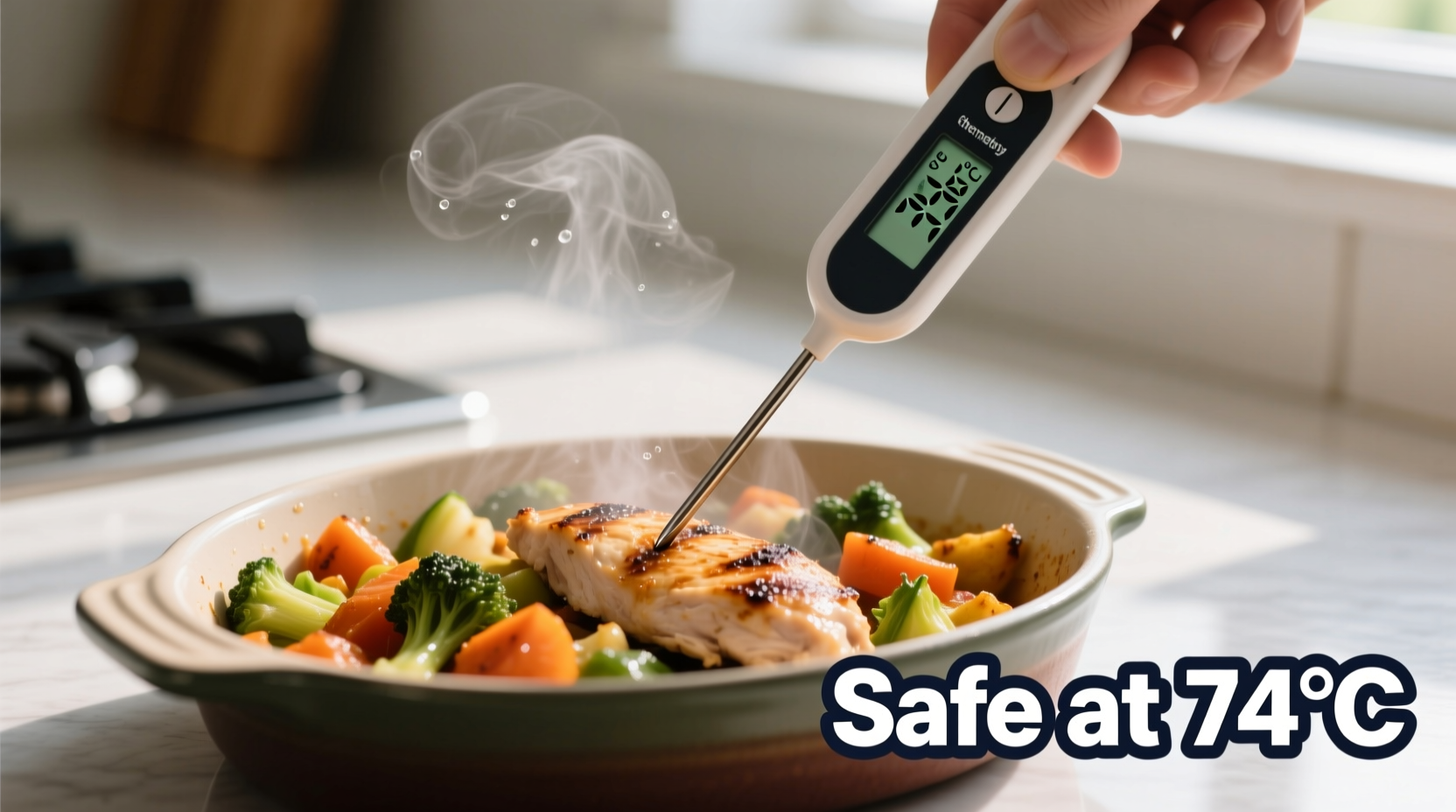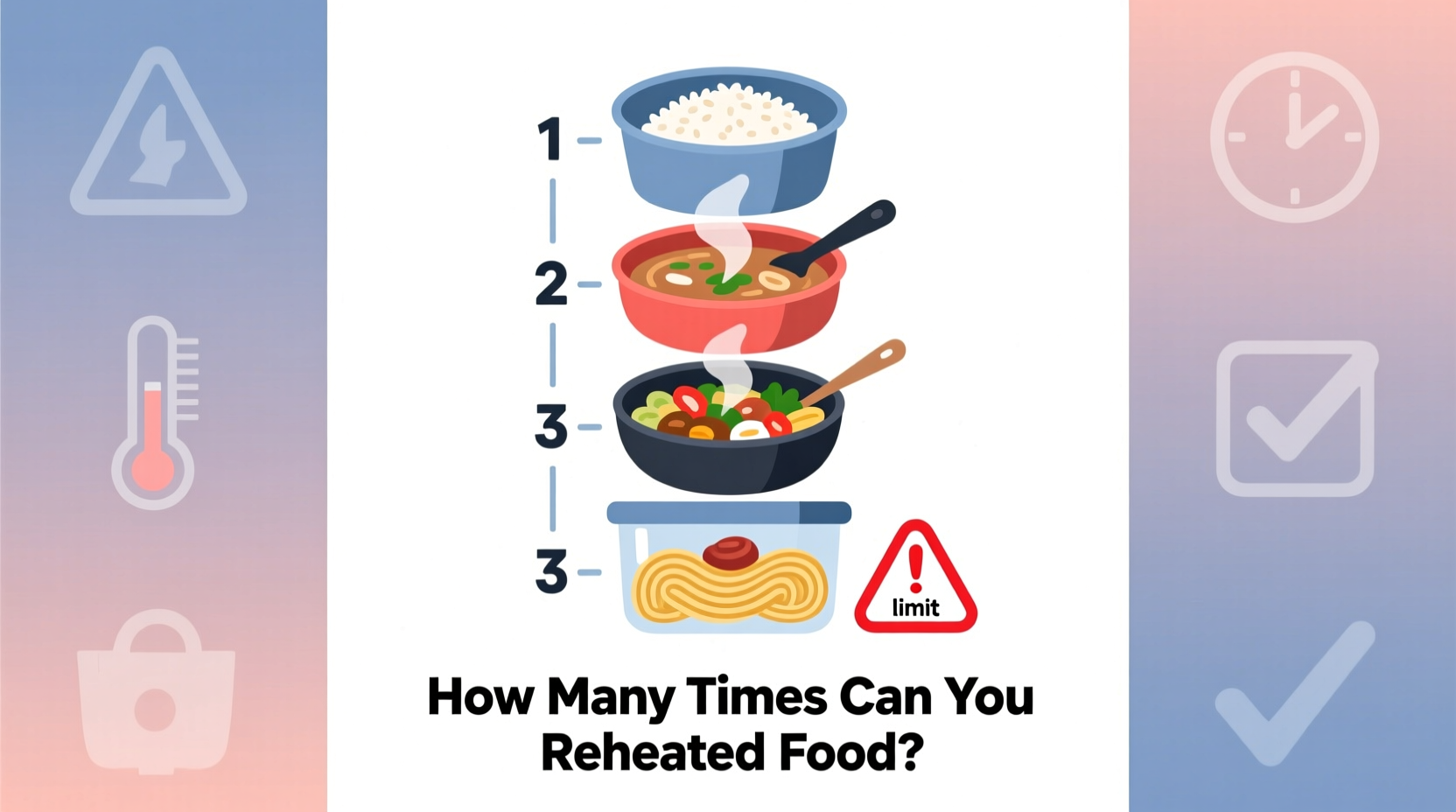Why Reheating Food Multiple Times Creates Serious Health Risks
When you reheat food, you're not just warming it up—you're navigating a critical food safety pathway. Each reheating cycle forces food through the temperature danger zone where bacteria multiply rapidly. The USDA Food Safety and Inspection Service confirms that reheating food more than once significantly increases the risk of foodborne illness because bacteria that survived the first cooling period have time to multiply during subsequent cooling phases.
Professional kitchens follow strict protocols: food is either served immediately after cooking or cooled rapidly to below 40°F within two hours. Home cooks rarely have the equipment to achieve this rapid cooling, making multiple reheating cycles especially dangerous in household settings.
The Science Behind Single Reheating: Bacterial Growth Explained
Bacteria like Salmonella, E. coli, and Listeria double in number every 20 minutes when food sits between 40°F and 140°F. When you reheat food once, proper heating to 165°F kills most bacteria. But here's the critical problem: if you then cool that food again and reheat it a second time, any surviving bacteria have multiplied exponentially during the cooling phase.
| Reheating Cycle | Bacterial Growth Potential | Food Safety Risk Level |
|---|---|---|
| First reheat | Controlled if heated to 165°F | Low (when done properly) |
| Second reheat | Exponential growth during cooling | High risk of food poisoning |
| Third reheat | Uncontrolled bacterial proliferation | Extreme health hazard |
This bacterial multiplication timeline explains why the USDA explicitly states that "leftovers should be reheated only once" to minimize health risks. Each reheating cycle creates a new opportunity for pathogens to reach dangerous levels.
Food-Specific Reheating Guidelines You Need to Know
Not all foods behave the same when reheated. Understanding these differences is crucial for safe meal planning:
Rice and Starchy Foods: Special Danger Zone
Rice contains Bacillus cereus spores that survive cooking and multiply rapidly during cooling. The NHS Food Standards Agency warns that reheating rice more than once creates particularly high risks because these spores produce heat-stable toxins that aren't destroyed by subsequent reheating. Always treat rice as single-reheat-only food.
Meat and Poultry: Temperature Precision Matters
When reheating meat products, you must reach 165°F throughout the food. The FDA Food Code specifies that reheated meat must reach this temperature within two hours to minimize time in the danger zone. Multiple reheating cycles make achieving this standard nearly impossible in home settings.
Soups and Sauces: The One-Exception Rule
Professional kitchens sometimes make exceptions for large-batch soups that are kept at proper holding temperatures (above 140°F). However, for home use, the FDA Food Code clearly states that "leftover soups should be reheated only once" before discarding any remaining portions.

Practical Strategies for Safe Leftover Management
Instead of wondering how many times you can reheat food, implement these science-backed strategies to keep your meals safe:
Portion Control: The Professional Kitchen Approach
Divide large meals into single-serving containers immediately after cooking. This prevents repeatedly reheating the entire batch. Commercial kitchens follow this practice to maintain food safety standards—you can easily adapt it at home.
Rapid Cooling Techniques That Work
If you must store leftovers, cool them rapidly using these methods:
- Place containers in ice water baths
- Use shallow containers (no deeper than 2 inches)
- Stir liquids frequently during cooling
- Never leave food at room temperature more than 2 hours
Reheating Methods That Maximize Safety
When reheating food properly:
- Use stovetop or oven instead of microwave for more even heating
- Stir food frequently to eliminate cold spots
- Always verify internal temperature reaches 165°F with a food thermometer
- Bring sauces, soups, and gravies to rolling boil
Debunking Common Reheating Myths
Many home cooks operate under dangerous misconceptions about food reheating:
Myth: "If it smells fine, it's safe to eat"
Pathogenic bacteria like Salmonella and E. coli don't always produce detectable odors. The USDA emphasizes that "smell is not a reliable indicator of food safety" because dangerous bacteria can multiply to hazardous levels without changing a food's odor.
Myth: "Reheating kills all bacteria, so multiple reheating is safe"
While proper reheating kills live bacteria, it doesn't destroy heat-stable toxins produced during previous cooling phases. Bacillus cereus toxins in rice, for example, remain dangerous even after thorough reheating.
When Professional Guidelines Differ: Commercial vs. Home Kitchens
It's important to understand context boundaries: commercial kitchens follow different protocols than home settings. Restaurants use specialized equipment for rapid cooling and precise temperature monitoring that most households lack. The FDA Food Code permits certain establishments to reheat food multiple times only when they maintain continuous temperature monitoring and rapid cooling capabilities—conditions rarely met in home environments.
For home cooks, the single-reheat rule isn't arbitrary—it's a necessary safety margin that accounts for slower cooling rates and less precise temperature control in typical household settings.











 浙公网安备
33010002000092号
浙公网安备
33010002000092号 浙B2-20120091-4
浙B2-20120091-4